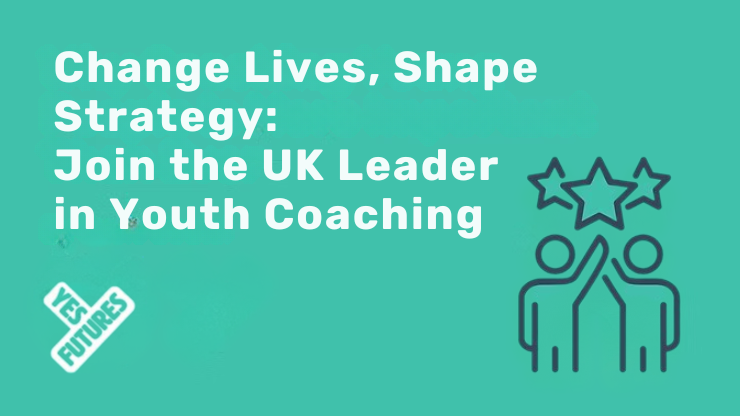How do I support my child's confidence whilst at home?
- Yes Futures
.png/v1/fill/w_320,h_320/file.jpg)
- Dec 21, 2022
- 4 min read
As part of our Home Grown Skills resources for young people's character development and wellbeing, we have put together some extra ideas to do at home!
Under the current circumstances, your child may feel a bit unsure of what is to come - this is perfectly normal!
Luckily, there are lots of ways to continue developing confidence through fun activities while being at home. Aside from supporting your child’s confidence, these activities can also help develop stronger relationships. Below is a list of confidence-building activities that both you and your child can try indoors!
1. Star jar
At Yes Futures, we love giving out stars as rewards on our Into the Wild residential weekend. We do this to give praise when a student has completed a goal or task. You could do this at home too! Their achievements can be big or small, but by praising them for overcoming a challenge, you’ll help your child to feel proud of themselves.
What you need: Pens, Paper and an empty container
Cut the paper into stars. Write down a few recent achievements that you think they deserve a star for, try 5 to get the jar started! It could be something simple like being kind to another family member, or remembering to wash their breakfast plate up! Whenever they next achieve something, get them to write it down on a star and pop it into the jar.
If your child is having a bad day, or needs a bit of positivity, pick out some slips of paper to brighten their day and remind them of all they’ve done to feel proud of.
2. Your future goals
Teaching your child to persevere through difficult challenges can greatly increase their self-confidence. When a child realises that they can achieve anything by taking small steps, they will start to see that they are a unique individual who has control over their future. It’s a very uncertain time, particularly for young people and their education. It is therefore important for young people to hold on to future aspirations and do what they can at home to achieve them.

What you need: Free journey planner (print or copy onto your own paper)
With your child, write a list of future goals. Try and jot down a range of short term and longer term goals, and mark them with different colours. These things can be big or small as long as your child is comfortable with them. It could be learning to play a song on an instrument, running a certain distance, or a future career that they are interested in.
The most important part of this exercise is the ability to break these goals down into smaller, more achievable targets that enable them to reach their long-term goal. When they achieve a goal, or even a step, congratulate them with a Star for their Star Jar!
3. Creating a new recipe
Time to get CREATIVE!
Teaching your child to see mistakes as learning opportunities instead of failures is an important skill and encourages your child to have a growth mindset.
What you need: Bowls, whisk, flour, milk, eggs, oil, salt & assorted ingredients/toppings available (+a strong stomach!) You can find a recipe here.
Start by making a typical pancake batter. Separate the batter into 5 different bowls. Starting with the first bowl, allow your child to add different ingredients to change the mixture (e.g. add banana, cheese or jam!) Supervise the process to make sure nothing dangerous is ingested, but try not to interfere. Allow your child to experiment even (/especially!) when they add unusual ingredients into the mix. After cooking the first batch of pancakes, ask, “What could you have done differently?” Then, allow your child to modify the recipe and try again with the next bowl.
You never know, your child’s recipe could become a new family favourite!
You can use this with any meal recipe to allow your child to see that success doesn’t always come after the first attempt!
4. Be a role model and getting to know a young person
One of the best ways to teach your children is to lead by example. It is important to teach our children that we are all imperfect and realise that our mistakes do not define us. As mentioned before, mistakes are opportunities for growth. A way to know how your child sees themselves is through the ‘Getting to Know Yourself’ activity.

What you will need: Download our ‘getting to know yourself’ diagram (either print this or copy onto A4 Paper), pens and A4 paper.
First, each complete the getting to know yourself diagram. By completing this alongside your child, you’ll give your child the opportunity to learn something new about you and show that you too have aspirations and interests.
On a separate piece of paper, ask your child to write a list of qualities they have - these can be good or bad. Look at the positive qualities and ask them to change these into “I am” statements like, “I am a hard worker” or “I am a good artist.” Each sentence must begin with “I am.” Discuss the qualities they’ve listed which are negative - having an open conversation about anything your child is self-conscious about will enable you to better support your child. Show them that there are ways to improve their qualities - fostering a growth mindset enables your child to recognise that they can change things about themselves if they want to!
--
We hope you find this useful! We have a range of free activities to download on our website, including 30-50 minute activity sheets to keep your child busy.

.png)


